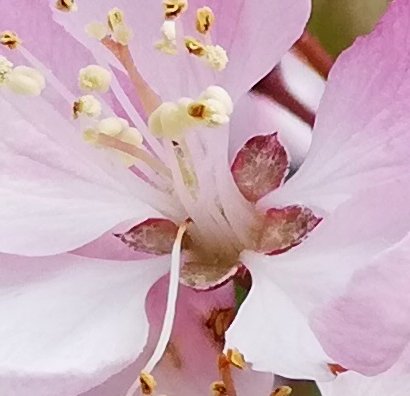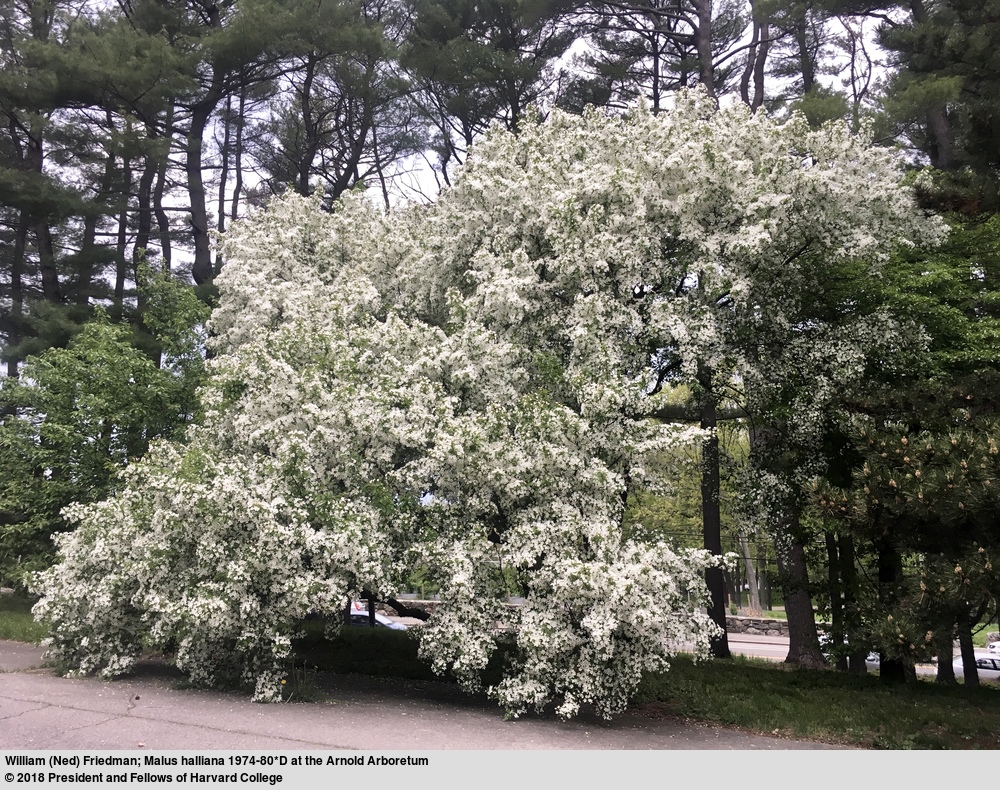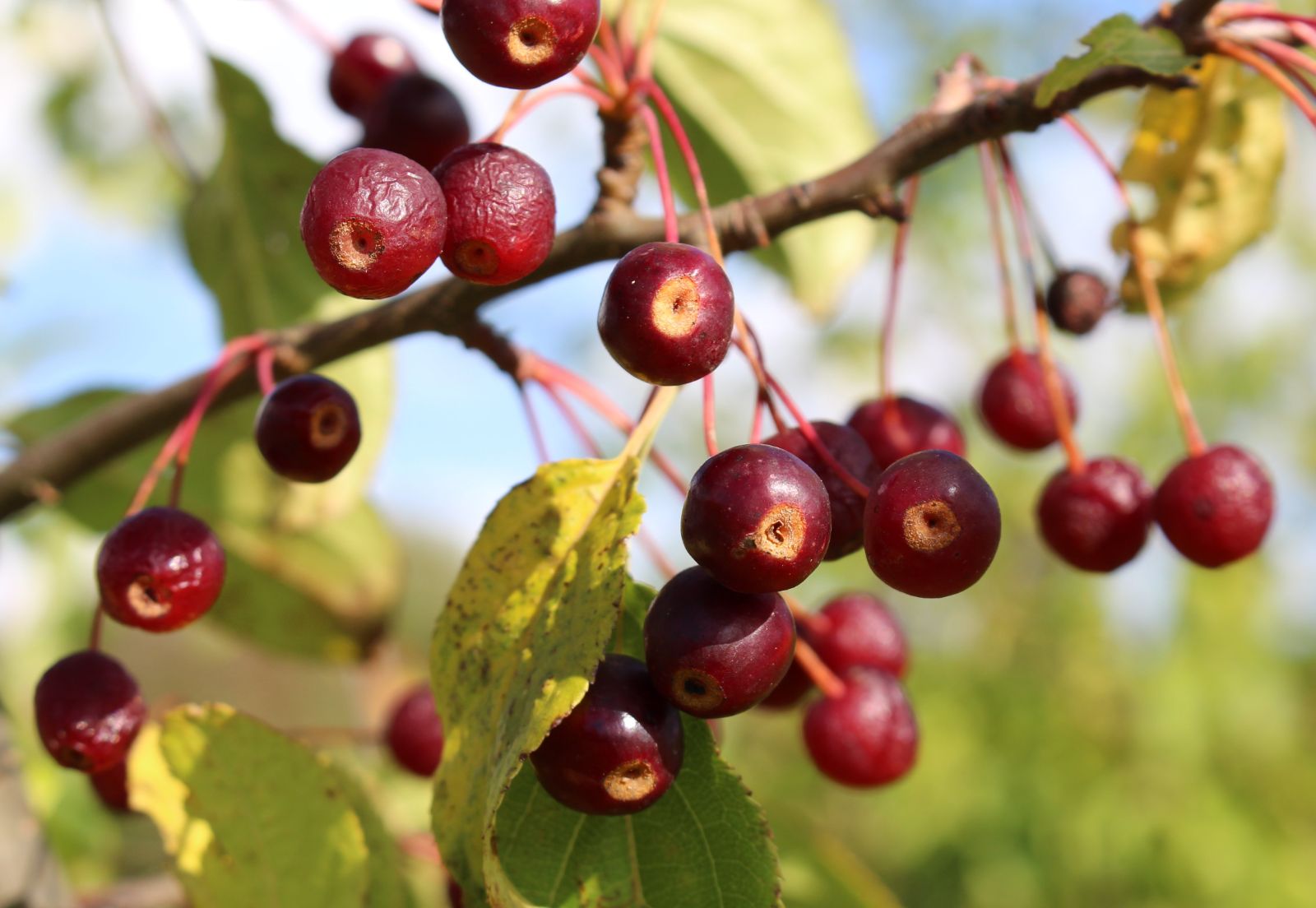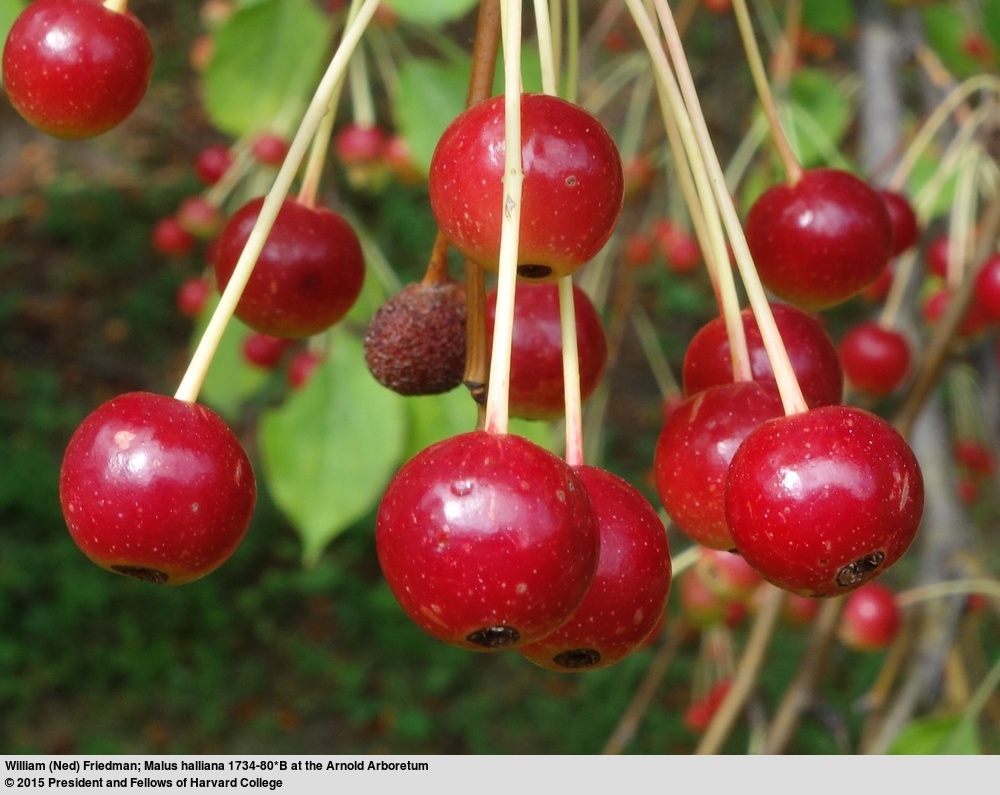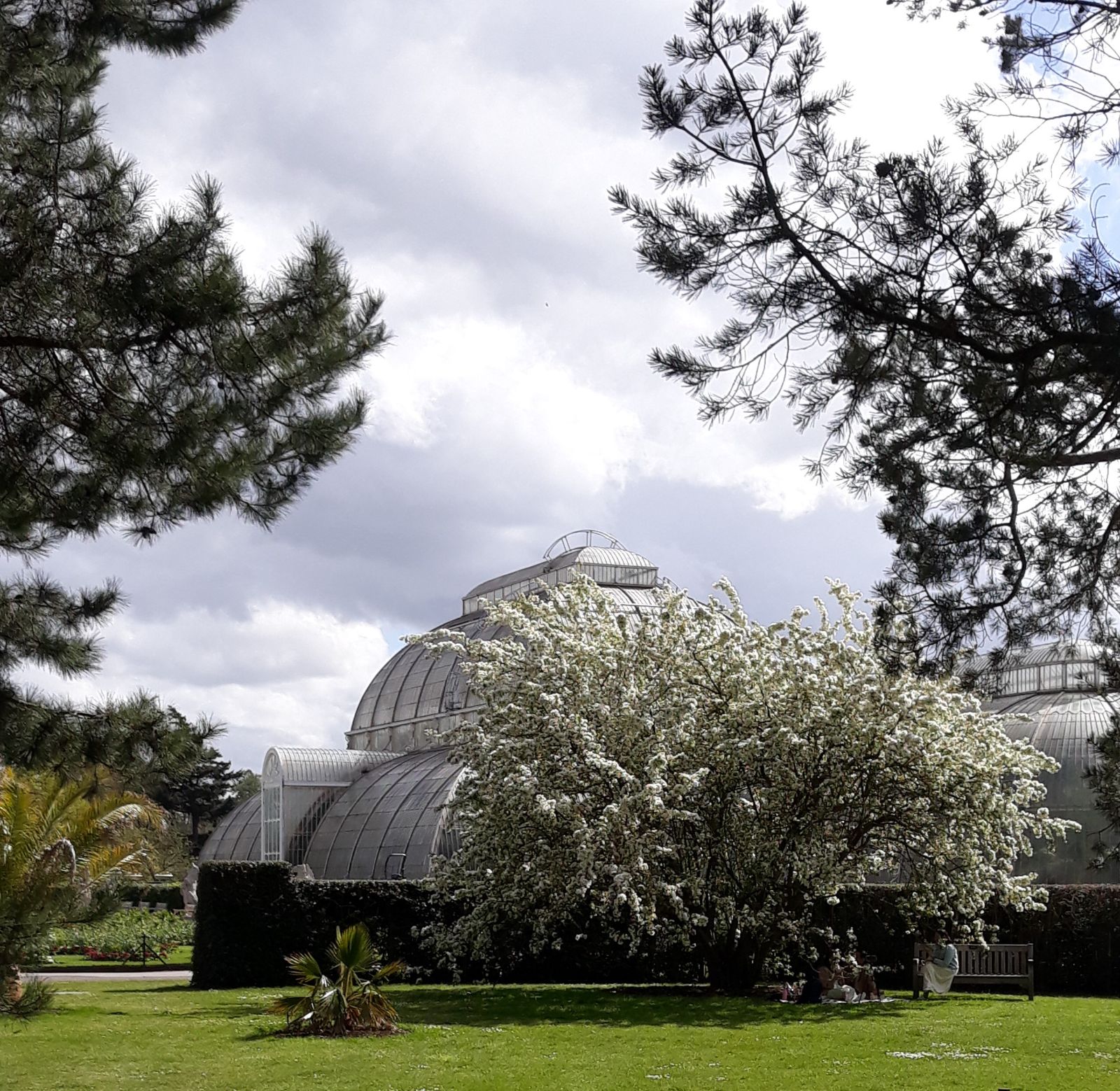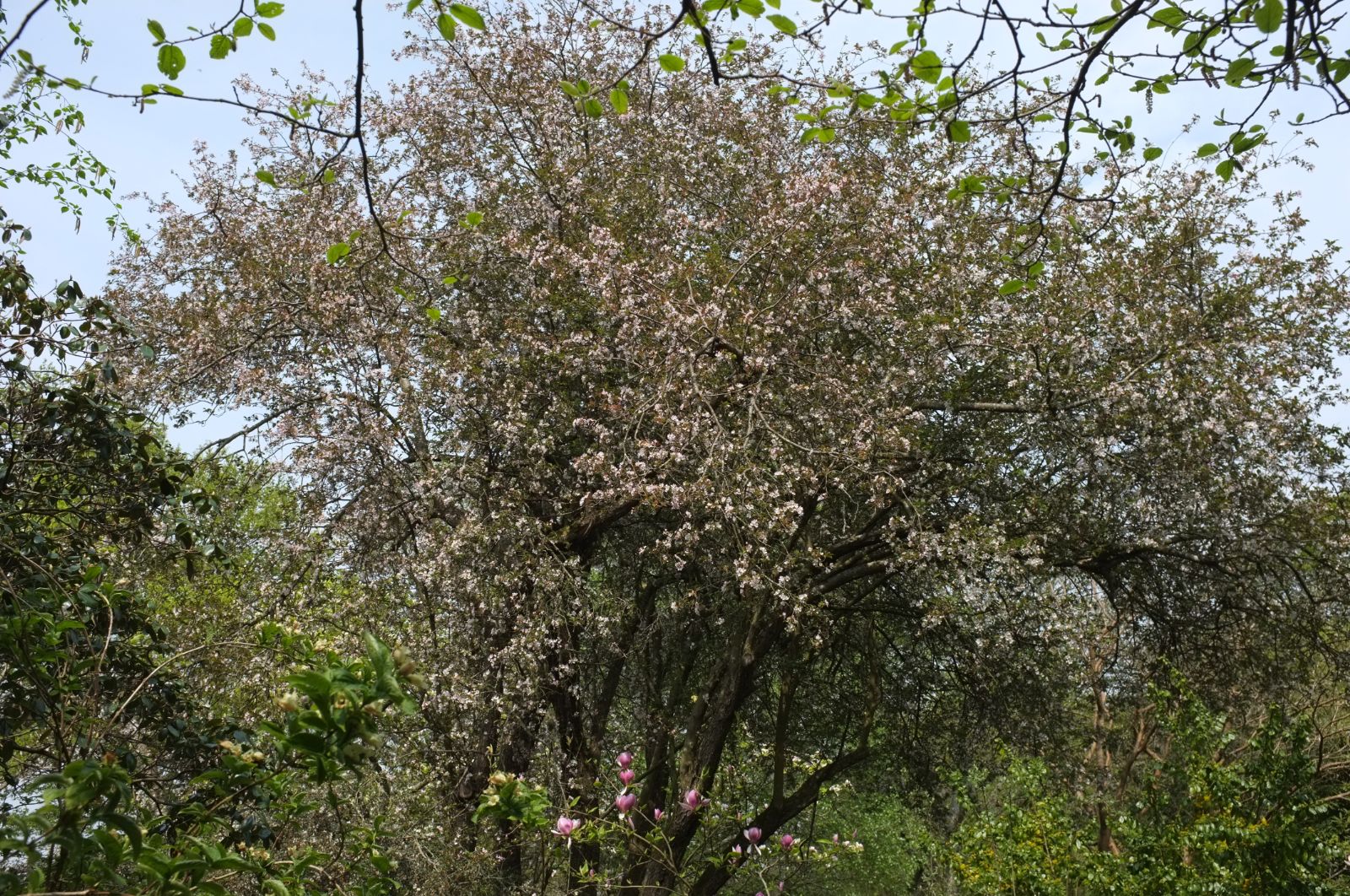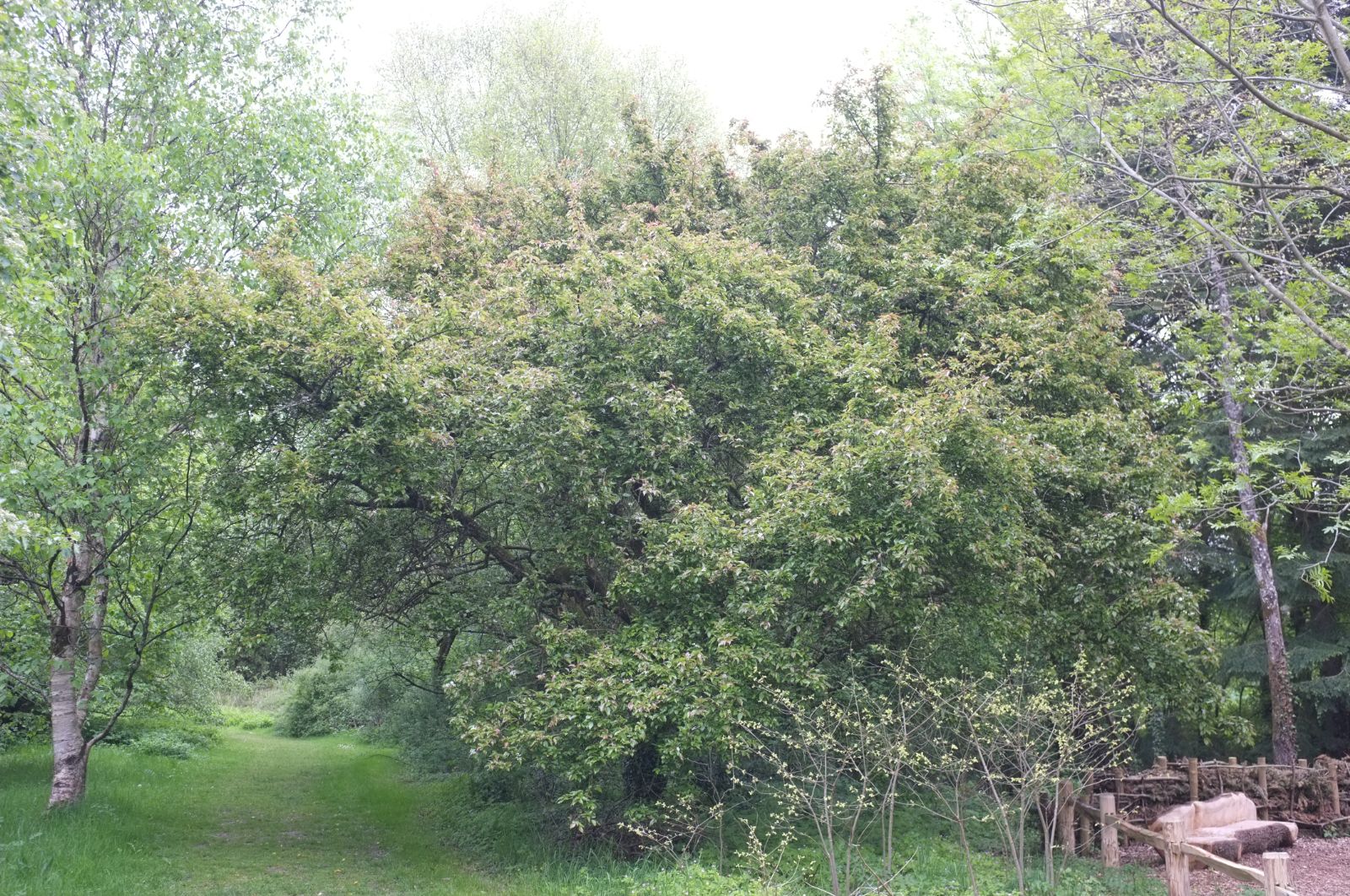Malus halliana
Sponsor
Kindly sponsored by
Francine: 'after many informative Tours and Study Days with the IDS I feel it only fitting to help and promote such a wonderful organisation'
Credits
Julian Sutton (species), Nick Dunn (cultivars) (2021)
Recommended citation
Sutton, J. & Dunn, N. (2021), 'Malus halliana' from the website Trees and Shrubs Online (treesandshrubsonline.
Infraspecifics
Other taxa in genus
- Malus × adstringens
- Malus angustifolia
- Malus × arnoldiana
- Malus asiatica
- Malus × astracanica
- Malus × atrosanguinea
- Malus baccata
- Malus bhutanica
- Malus × brevipes
- Malus chitralensis
- Malus coronaria
- Malus crescimannoi
- Malus Cultivars A-B
- Malus Cultivars C
- Malus Cultivars D-F
- Malus Cultivars G-I
- Malus Cultivars J-K
- Malus Cultivars L-M
- Malus Cultivars N-Q
- Malus Cultivars R
- Malus Cultivars S
- Malus Cultivars T-Z
- Malus dasyphylla
- Malus × dawsoniana
- Malus domestica
- Malus doumeri
- Malus florentina
- Malus × floribunda
- Malus fusca
- Malus × gloriosa
- Malus × hartwigii
- Malus × heterophylla
- Malus honanensis
- Malus hupehensis
- Malus ioensis
- Malus kansuensis
- Malus kirghisorum
- Malus komarovii
- Malus × magdeburgensis
- Malus × micromalus
- Malus × moerlandsii
- Malus montana
- Malus ombrophila
- Malus orientalis
- Malus × platycarpa
- Malus praecox
- Malus prattii
- Malus prunifolia
- Malus × purpurea
- Malus × robusta
- Malus rockii
- Malus Rootstock Cultivars
- Malus Rosybloom Cultivars
- Malus × scheideckeri
- Malus sieversii
- Malus sikkimensis
- Malus × soulardii
- Malus spectabilis
- Malus spontanea
- Malus × sublobata
- Malus sylvestris
- Malus toringo
- Malus transitoria
- Malus trilobata
- Malus tschonoskii
- Malus turkmenorum
- Malus yunnanensis
- Malus × zumi
Small tree to 5 m. Branchlets purplish, slender, finely hairy when young, glabrous later. Buds purplish brown, ovoid, scales glabrous or ciliate at margin. Leaf blade dark green, often tinged purple above, ovate or elliptic, 3.5–8 × 2.5–4.5 cm, glabrous except sometimes finely hairy along midvein above, base cuneate to rounded, apex long acuminate, margin with small, obtuse teeth; petiole 0.5–2.5 cm, sparsely pubescent when young. Inflorescence a 4–6-flowered corymb, 4–6 cm across; pedicels slender and pendulous, purple, 2–4 cm, sparsely hairy. Flowers 3–3.5 cm diameter in spring (March-April in China). Sepals triangular-ovate, 3–5 mm, tomentose above, falling before the fruit is ripe; petals often more than 5, pink, obovate, ~1.5 cm; stamens 20–25, unequal, about half as long as petals; styles 4 or 5, slightly longer than stamens. Fruit purplish, pear shaped or obovoid, 6–8 mm diameter, with a small scar at the apex, September-October in China. (Gu et al. 2003; Cullen et al. 2011; Bean 1981).
Distribution China Anhui, Guizhou, Hubei, Jiangsu, Shaanxi, Sichuan, Yunnan, Zhejiang.
Habitat Thickets on slopes or by streams; 0–1200 m asl.
USDA Hardiness Zone 4-8
RHS Hardiness Rating H6
Conservation status Data deficient (DD)
Malus halliana belongs to the group of apples centred on M. baccata. It can be distinguished from that species by its shorter, obtuse rather than acuminate sepals, and by the (normally) pink petals (Gu et al. 2003). The leaves have a leathery texture, like those of M. hupehensis but not M. baccata (H. McAllister pers. comm. 2020); a fine red margin to some of the young leaves seems to be characteristic of plants in British cultivation (The Tree Register 2020), so too a purplish midrib (Bean 1981). It is the flowers that are the great attraction, early (often in March in Britain), clear pink on red pedicels, with the young stems also tinted; the small purplish fruits are not in the first rank (Fiala 1994). Often multistemmed and sometimes suckering, it eventually forms a rather open tree. The rare Japanese M. spontanea is very similar, and has sometimes been treated as a variety of M. halliana (e.g. Bean 1981), but is hardly known in gardens.
The species was named from cultivated material brought to the United States along with other significant garden plants by the American medical doctor and gardener George Rogers Hall, who lived in Japan between 1855 and 1861 (Howe 1923); Koehne’s specific epithet commemorates him. Long cultivated as an ornamental in both China and Japan, there is ongoing uncertainty about the degree to which many Chinese populations can be considered truly wild (Gu et al. 2003; Bean 1981); records from western provinces seem to have been less trusted (Bean 1981; Royal Botanic Gardens, Kew 2020). The Sino-American Botanical Expedition of 1980 made nine collections resembling M. halliana / hupehensis from across the Shennongjia Forest District of western Hubei (Bartholomew et al. 1983), perhaps suggesting a wild population. Two of these which included seed, and which have since been attributed to M. halliana, have introduced new blood to western cultivation; SABE 1218 and 1314. Semidouble forms such as ‘Parkmannii’ (see below) and ‘National Arboretum 127’ (with a better vase-shaped crown claimed – Fiala 1994) have been selected both in the Far East and America.
Based on SABE 1314, Hugh McAllister (pers. comm. 2020) considers this to be a diploid, sexual species; Schuster & Büttner (1995) found ‘Parkmannii’ to be triploid. Flora of China (Gu et al. 2003) reports both diploids and triploids, but the confusion with triploid M. hupehensis should be noted here.
In Britain, Malus halliana is largely restricted to specialist collections in its typical form. There is a young tree from SABE 1218 at Ness Botanic Gardens, Cheshire, for example, along with another without wild provenance (T. Baxter, pers. comm. 2020). Identification issues plague older specimens attributed to this species, not least because an Ernest Wilson collection of M. hupehensis from western Sichuan was originally labelled M. halliana (Bean 1981). This collection was presumably Wilson for Veitch 1720 of 1904 and/or W 4172 of 1910, from the same locality; Wilson also collected cultivated M. halliana in Japan during 1914 (Sargent 1916). The Tree Register (2020), while acknowledging the issue, tentatively attributes several large, luxuriant, white flowered trees to M. halliana, for example one at Bodnant, North Wales (12 m × 275 cm in 2016). Typical M. halliana is similarly rare in collections elsewhere in Europe; there is a record from the Hof ter Saksen Arboretum, Beveren, Belgium (Plantcol 2020); another very northerly record is of a broad, low shrub at Ringve Botanical Garden, Trondheim, Norway (NTNU University Museum 2020).
Apart from the cultivar ‘Parkmannii’, it is rare to find trees labelled M. halliana in North American collections. There are specimens of garden origin at the US National Arboretum, Washington DC, and the Hoyt Arboretum, Portland, OR, dating from 1951 and 1971 respectively (US National Arboretum 2020, Hoyt Arboretum 2020). The Holden Arboretum, OH and Berkeley Botanical Garden have examples from SABE 1218 (Holden Arboretum 2020, University of California Botanical Garden 2020). Several at the Morton Arboretum, IL are recorded as being of Sichuan provenance, from Shanghai Botanic Garden (Morton Arboretum 2020) – note the uncertainties around western Chinese records.
'Parkmanii'
A semi-double, one of Hall’s original introductions and named for his friend, the historian Francis Parkman, in whose garden it was first grown (Bean 1981).
Growth Rate/Size: Small (<4 m)
Form/shape/habit: Vase shaped
Foliage: Small, narrow, dark green
Flower colour: Shell-pink
Flower size: Medium (<4 cm)
Flower form: Semi-double, with about 15 petals
Flower season: Mid
Fruit size: Very small (<1 cm), sparse
Fruit shape: Round
Fruit colour: Dark red
Fruit season: Mid
Disease resistance/susceptibility: Low susceptibility
General notes: Despite being a relatively weak tree with little fruit production, the large flowers are particularly attractive hanging on long, deep crimson pedicels.
(Description duplicated under Malus Cultivars N-Q ‘Parkmanii’)


